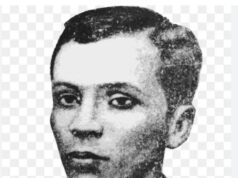THE ANGELES City story we started here last issue, in celebration of 50 years of cityhood, continues. Still from out book Agyu Tamu: Turning Tragedy into Triumph.
JUNE 10, 1991. Angeles City awakened to its worst nightmare: the American dream was over. Dashed was the hope – against hope – that GI Joe would stay, come what may. A belief borne by the new concrete wall around the base perimeter that had just been completed, the frenzied base housing construction seen as a sure sign of increased troop deployment, and the second runway built reportedly to serve as alternative landing site for the space shuttle Columbia. All coming to nought.
Before stunned eyes passed the very end of the city’s economic being: By car, bus, truck, American servicemen and their dependents started their exodus from Clark – jamming the North Luzon Expressway in a three-mile long convoy – to Subic where US warships and troop transports awaited them for the long journey home.
Their departure from Clark was for the Americans a less than stoic acceptance of the impending repudiation by the Philippine Senate of the bases treaty – to ultimately come in September – than a hurried, harried flight from
certain catastrophe.
June 11. “16,000 evacuated from Clark” bannered the Stars and Stripes, with the subhead: “Major eruption feared from Mount Pinatubo volcano.”
The rumblings of the hitherto hardly known volcano starting to get frequenter and stronger by the hour. June 12. Philippine Independence Day. For the first time in 90 years, Angeles City was thoroughly free of a foreign occupation force.
The meaning of the day though was utterly lost to Mayor Antonio Abad Santos whose speech before the city hall alternated between carping – “overacting,” he called the American abandonment of the base, and comforting – that the greater number of Angelenos need not panic, being outside Pinatubo’s immediate 10-kilometer radius that was initially tagged as danger zone.
Thunderous explosions cut Abad Santos in mid-speech, a giant plume of ash shot up 20 kilometers in the sky, immediately followed a rain of hot ash and pumice stones. It was 8:51 in the morning.
Panic – people froze in their track, eyes in the sky and mouth agape, shocked and awed by nature’s might. Then pandemonium – the rush for home, hither and thither like headless chickens, amid the cacophony of frightened shrieks, nervous prayers, screeching tires and blaring horns.
With the acrid smell of sulphur wafting in the ash-laden air, masks – surgical and industrial – ran out in the city’s drug and hardware stores. The surplus biochemical masks from Desert Storm which found their way to the PX stalls of Dau and Nepo Mart had been snagged, wholesale, by some very enterprising profi teer much earlier.
Braving the cloud of ash, President Cory Aquino flew by helicopter to Clark to see the situation first hand, and dropped by the Angeles City High School where the eruption’s very first evacuees of 2,000, mostly Aeta tribesmen, have taken refuge.
“This could only be the beginning.” So warned Dr. Raymundo S. Punongbayan, director of the Philippine Institute of Volcanology and Seismology (Phivolcs) of the June 12 eruptions. June 13. Phivolcs recorded more eruptions, the volcano gushing greater clouds of ash and gases 25 kilometers in the sky.
“Phenomenal eruptions,” Punongbayan called them, and declared: “This is already the Big Bang. I can’t see any other eruption that will exceed this.”
June 14. Dark clouds blanketed the city, ominously dimming the garish neon lights of Balibago. June 15. A much Bigger Bang that proved Punongbayan’s declaration deadly wrong. The Great Eruption that turned bright day – starting at 8:15 in the morning – to darkest night. The roll of thunder, the flash of lightning, the rain of ash and stones, and the tremors of the ground foreboding the very end of days.
The city’s secondary economic lifeline – next only to Clark Air Base – furniture and handicraft manufacturing totally collapsed, literally, from the weight of ashfall: Factories – roofs, beams, posts and walls – crashing down on machines, equipment, supplies and finished products.
Collapsed too, as many houses in the city, was the roof of the Philippine Rabbit Bus terminal downtown, killing two waiting passengers and injuring scores of others. Later in the day, the city’s very icon of the finest Chinese cuisine – Shanghai De Luxe Restaurant – burned to the ground after its roof collapsed on the liquefied petroleum gas tanks in its kitchen.
By 2 in the afternoon, steaming mudfl ows – soon to enter the lexicon as the terrifying “lahar” – sprang from the foot of Pinatubo, rampaged through the Abacan River, destroying in succession Friendship Bridge that led to Clark, Hensonville Spillway, Abacan Bridge, where MacArthur Highway traversed and Pandan Bridge that led to Magalang.
Scouring the riverbank and gobbling up houses and buildings, including the remnants of the collapsed Angeles City General Hospital. It was the city’s fi rst taste of the devastating power of lahar – a horrific byword sending people to higher ground at the slightest drop of rain.
West of the city, the lahar-swollen Mancatian River swallowed its eponymous bridge cutting off Angeles City from Porac town. Mudflows overtopped the Sapang Balen Creek and spread steadily across the city proper.
The public market and commercial area of San Nicolas and the business district, indeed the very heart of the city, Sto. Rosario where city hall, the “big church,” the enclaves of the rich, as well as the city’s and Central Luzon’s biggest private school, Holy Angel College were all sited, all inundated by steaming mud.
There, a long established tale belied: As the elevation of Angeles City is levelled with the very spire of the Metropolitan Cathedral in San Fernando, any flooding in the city would mean the capital town under at least 30 feet of water.
On Doomsday itself, no flooding was recorded in San Fernando. With supplications to the Almighty drowned
by the rumble of the volcano, with the onslaught of mudflows and the rain of ash unabating, it was hegira for the Angelenos.
All the roads leading south of the city were fi lled with dazed and dazzled refugees, on foot, in cars, on buses, on truck: seeking relative safety in the homes of relatives and friends, finding temporary shelters in evacuation centers, the first of which was Amoranto Stadium in Quezon City provided for by Mayor Brigido Simon, Jr., a Kapampangan himself, who also brought buses to the very ramp of the Angeles exit of the North Luzon Expressway to ferry more evacuees.
Buried in ashes, reduced to a virtual ghost town, Angeles City and its twin basetown, which also bore the initial brunt of the eruptions, made easy picking for the moralists’ sermon of the wrath of God heaped upon Sodom and Gomorrah.
The host cities to the US military bases long known as deeply mired in decadence and debauchery. But erased from the face of earth like the biblical sin cities, Angeles City refused to be.




